
Posts Tagged: UC Davis School of Veterinary Medicine
Veterinarians Registering Now for UC Davis-OSU Honey Bee Health Course
If you're a veterinarian or a veterinary technician in California or Oregon, then you'll want to...
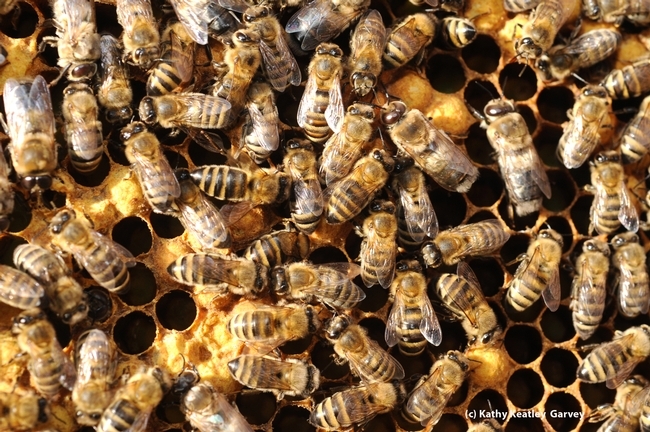
Inside a hive. (Photo by Kathy Keatley Garvey)
'Beekeeping and Management' Part of UC Davis Veterinary Medicine's Winter Conference
Mark your calendar! "Beekeeping and Management" will be part of the two-day UC Davis School of...
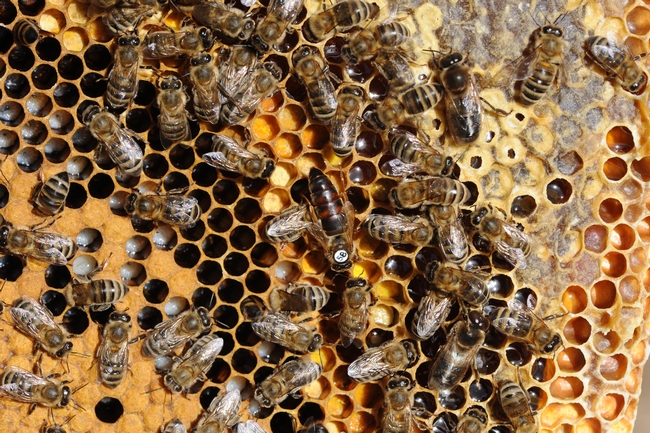
A honey bee colony at work. Extension apiculturist Elina Niño will discuss three topics dealing with "Beekeeping and Management" at the UC Davis School of Veterinary Medicine's 2019 winter conference. (Photo by Kathy Keatley Garvey)
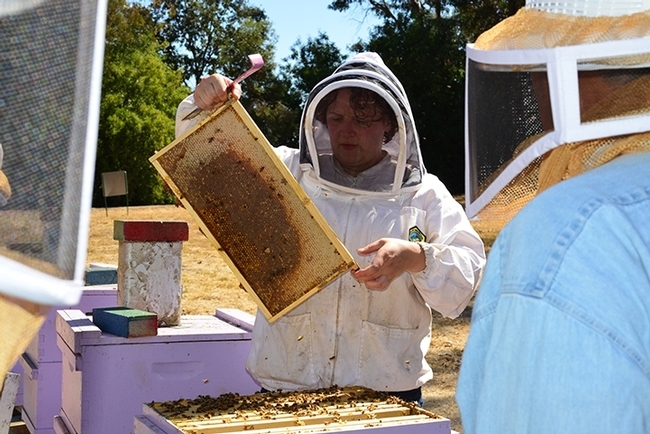
Extension apiculturist Elina Lastro Niño opening a hive at the Harry H. Laidlaw Jr. Honey Bee Research Facility, UC Davis. (Photo by Kathy Keatley Garvey)
Zeroing in on the Zika Virus
If you're interested in Zika virus research, you'll want to attend Lark Coffey's seminar on...
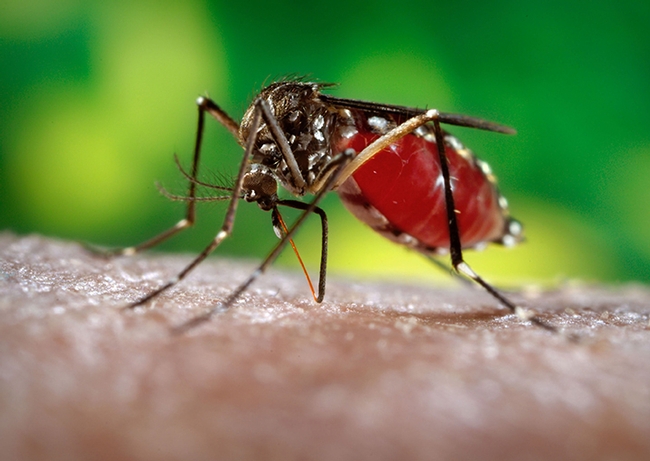
This mosquito, Aedes aegypti (infected mosqutoes can transmit such diseases as dengue and the Zika virus) will be the focus of Lark Coffey's seminar at 4:10 p.m., Wednesday, Nov. 7 in 122 Briggs Hall, UC Davis. (Photo by James Gathany, Centers for Disease Control)
Pastured poultry farm to foster innovation for small chicken farms
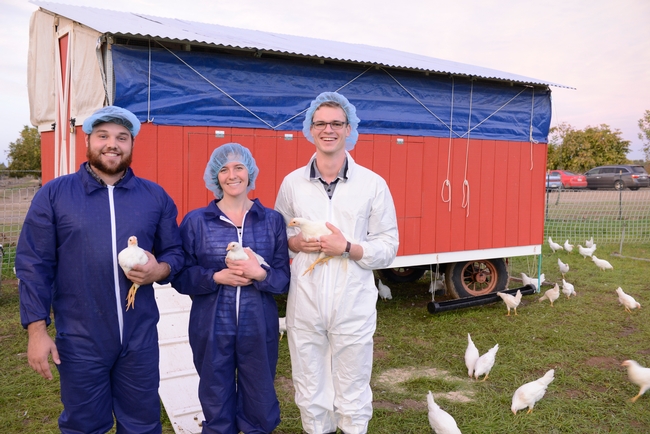
Pasture-based chicken production offers many benefits as well as some challenges in terms of food safety, animal health and welfare, and environmental impacts, said Maurice Pitesky, UC ANR Cooperative Extension poultry specialist with the School of Veterinary Medicine and co-leader of the poultry project.
The new 4.5-acre farm, located about one mile west of the central UC Davis campus, includes a seeded, irrigated pasture, where the chickens can forage. In the center is a bright red student-built Eggmobile for night time housing. The ‘coop on wheels' can be strategically moved around the land for consistent fertilization. The pasture uses a portable electronic fence to protect against predators and is surrounded by a 50-foot band of uncultivated land to serve as a wildlife buffer.
“This is a unique innovation, research and outreach resource for the Western United States,” Pitesky said. “The project includes faculty and students with expertise in veterinary medicine, husbandry, welfare, pasture management and engineering, which allows us to address issues related to predator control, welfare, food safety and food efficiency.”
Debbie Niemeier, professor in the Department of Civil and Environmental Engineering, and her team have already developed a number of innovations for the project, including a tarp-pulley system, portable-shade and predator-mitigation structures, an automatic watering system, and modular roll-out nest boxes.
One of the advantages of the pasture-based system is the opportunity for a farmer to integrate chicken production with a farm's existing cropping system, with the chickens providing natural fertilizer for the crops.
“It's also a way for crop farmers to move into poultry production without expanding their land or adding nitrogen fertilizer to their farming system,” Pitesky said.
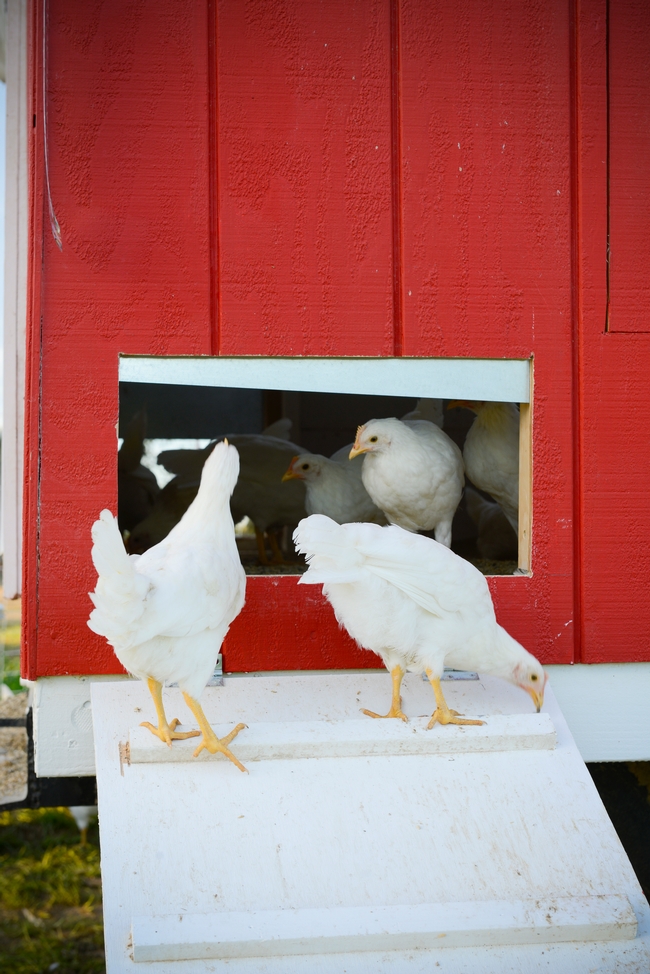
Eggs produced by the project's flock will initially be donated to food shelters. The potential for eventual egg sales to the community is being explored. Eventually, the research team hopes to construct multiple Eggmobiles with different designs, and in time would like to expand the project to include broiler chickens, as well as cropping systems that integrate poultry, in order to fully maximize the potential of the land for food production.
A list of donors and other information about the UC Davis Pastured Poultry Farm can be found online. The School of Veterinary Medicine has established an online site where individuals interesting in supporting the UC Davis Pastured Poultry Farm financially can make donations.
Author: Patricia Bailey
Reduce the risk of bird flu in backyard chickens
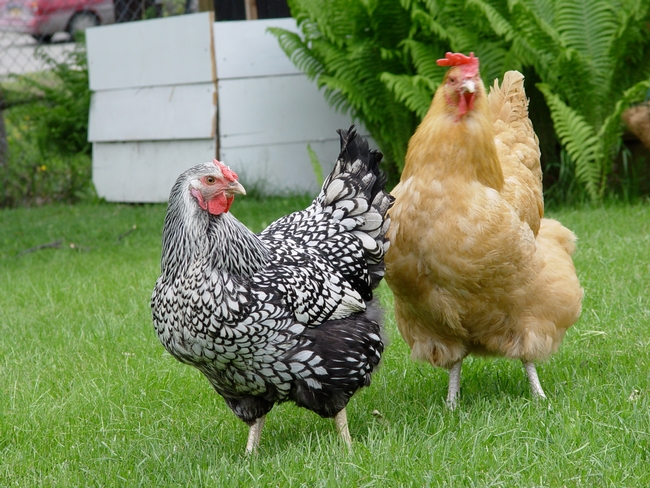
Protecting their birds against disease should be a priority for chicken owners, no matter what size the flock, according to Maurice Pitesky, a UC Agriculture and Natural Resources Cooperative Extension specialist in the School of Veterinary Medicine at UC Davis.
“Wild birds are the biggest risk because they can carry the virus but look completely healthy, so it's important to keep them away from your chickens,” said Pitesky. He adds that signs your chicken could have contracted avian influenza are depression, no appetite, diarrhea, soft/misshaped eggs, and sudden and increased or unexplained death in flocks.
Commonly called “bird flu,” the avian influenza virus - routinely found in wild waterfowl - can spread to chickens and other domestic poultry and cause significant mortality and economic loss. This year the nation has experienced the worst bird flu outbreak in history, with three confirmed cases in California — two of which carried the more dangerous, highly pathogenic strain. In each case, the disease, which is not dangerous to humans, was introduced by wild waterfowl migrating along the Pacific Flyway. Some of these wild birds might now be carrying the Eurasian strain of the H5 highly pathogenic avian influenza.
Pitesky and the California Department of Food and Agriculture offer some important bioscurity tips to help reduce the risk of your chickens contracting bird flu:
- Wash your hands with soap and water or use hand sanitizer before and after working with chickens.
- Use footbaths before entering and exiting the fenced-off coop area. Each footbath — a covered container with an approved disinfectant to disinfect shoes — should be placed in a staging station, such as on a concrete surface or a pallet, to prevent dirt from being tracked into the footbath. Disinfectant should be changed daily to be effective.
- Have designated “coop boots.” These will be the only shoes that go into your chicken area, and they won't go anywhere else. If you hunt waterfowl, make sure your equipment and clothing are separate from your domestic poultry.
- Don't allow wild animals and waterfowl to come in contact with your chickens. For example, if you have a pond or body of water that can attract waterfowl to or near your facility, consider draining if feasible.
- When obtaining birds, isolate them from other birds for 30 days before adding them into your flock. This will reduce the risk of introducing disease into the original flock.
- Always obtain birds from reputable, disease-free sources that practice good biosecurity methods, and purchase feed from clean, dependable suppliers. Store the feed in containers that are bird, rodent, and insect proof. Provide clean, fresh water to your birds at all times.
- Restrict access by visitors onto the premises where your birds are housed. Do not allow people who own other birds to come in contact with your birds.
- Report signs of illness or increased mortality to your veterinarian or the Sick Bird Hotline 866-922-BIRD (2473). In addition, necropsies are provided free-of-charge for owners of less than 1,000 chickens at the school's California Animal Health and Food Safety Laboratory System.
By joining the California Poultry Census, you can receive the latest information and updates about avian influenza in California.
Early disease detection, prevention key to limiting spread of disease
State officials credit early disease detection and prevention, through proactive surveillance and good biosecurity practices, as key factors limiting the spread of avian influenza. For example, a wildlife surveillance program conducted by USDA Wildlife Services regularly submits samples to the veterinary school's California Animal Health and Food Safety Laboratory System at UC Davis for testing. This helps scientists and animal health officials understand where certain viruses are circulating in the U.S., including the more dangerous strains for domestic poultry.
UC poultry experts are conducting a statewide survey of backyard chickens, and providing outreach and training on health and disease prevention to individuals who, in turn, will provide the information to backyard chicken producers and small, commercial chicken operations. In addition, veterinary researchers Rodrigo Gallardo and Beate Crossley have recently been awarded a grant to study new, highly pathogenic viruses affecting the U.S. poultry industry. The goal is to better understand why these viruses have been so difficult to eradicate and to help prevent their introduction to commercial farms.
Additional information:
- University of California Cooperative Extension Poultry Resources
- CDFA Backyard Biosecurity for Poultry
- USDA Backyard Biosecurity
